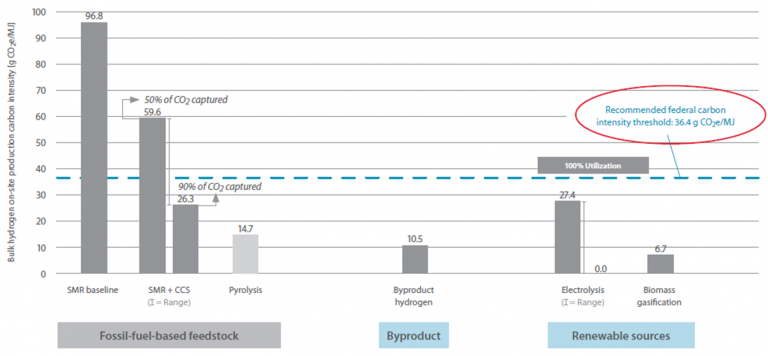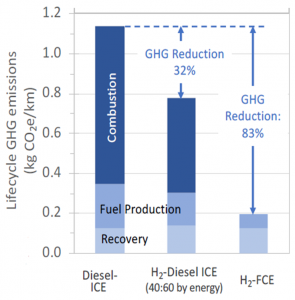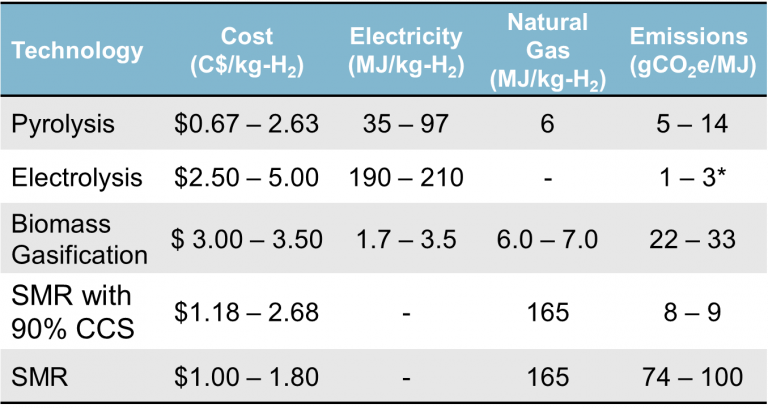Mehmud Iqbal | MEL Candidate | Dec 17, 2021.
Mentor: Patrick Steiche, Hydra Energy Corporation
Abstract
About 10.5% of greenhouse gas (GHG) emissions in Canada come from freight transportation, and a majority of these emissions come from heavy-duty trucks. With the focus around the world shifting to net-zero emissions as a solution to the climate crisis, countries are stepping up with hydrogen strategies. However, the main problem remains on the supply side, hydrogen currently cannot be offered competitively with diesel/NG prices, and on the demand side, technologies, such as fuel cells, are not widely commercially available to offtake hydrogen on a large scale. Hydra Energy offers to link supply and demand by engaging with large chemical providers to take off their by-product hydrogen. At the same time, Hydra works with trucking fleets to convert their trucks to run on a diesel/hydrogen co-combustion to reduce GHG emissions from freight transportation. At present, Hydra Energy is using by-product hydrogen produced to power the heavy-duty trucks. Beyond by-product hydrogen from chemical processes, various alternative technologies use a waste feedstock (wood, food, municipal, and others) to produce hydrogen in a cost-effective matter. The goal of this proposed research project is to explore these alternative hydrogen production processes. It includes a literature review to identify suitable processes that can produce hydrogen from waste. Following this as a second step is a market analysis of potential technologies to identify which processes are technically possible to implement on a large scale. A third step shall conduct economic and GHG analysis for a hypothetical project in Canada to better understand the economic feasibility and impact of emission reductions. Lastly, the results from the first three steps shall be compared with more widespread applications such as electrolysis and steam methane reforming.
Introduction
In 2019, British Columbia’s gross greenhouse gas (GHG) emissions were 68.6 million tons of carbon dioxide equivalent (MtCO₂e). This is an increase of 3.0 MtCO2e (5%) from 65.7 MtCO2e in 2007, the baseline year for emission reduction targets.
The transportation sectors produce the most greenhouse gas emissions in B.C., which is over 25 million tons of CO2e annually, accounting for approximately 41% of the province’s total GHG emissions. Major transportation-related sources of greenhouse gas emissions include cars, trucks, heavy-duty trucks, and rail.
Hydrogen is needed to meet the decarbonization objectives set by B.C., with study findings showing that hydrogen can contribute up to 31% of the 2050 carbon reduction target, at 15.6 MtCO₂e/year.
Hydra Energy is the first company to deliver a hydrogen-converted, heavy-duty truck to a paying customer and the first Hydrogen-as-a-Service™ (HaaS™) provider for commercial fleets looking to reduce emissions and costs today with limited risk and no up-front investment.
Hydra Energy source low-carbon hydrogen from leading chemical partners and provide clean fuel to Hydra-retrofitted fleets at diesel-equivalent (or lower) prices enabling an immediate and affordable transition to cleaner trucking.
WHY H2 IS IDEAL FOR TRUCKING
•Meaningfully reduces GHG emissions. Provides the high torque and power needed for traction and heavy payloads.
•Doesn’t add the weight of heavy batteries that can reduce payload and revenue.
•Refuels as quickly as diesel and a lot less than charging batteries. Extended charging times can delay payload delivery, thereby reducing the sector’s efficiency which would cost money.
•Works in cold temperatures as H2 remains as a gas in temperature up to -252.9°C.
•May attract younger, environmentally-conscious drivers.
GHG EMISSIONS INTENSITY COMPARISON
The federal Hydrogen Strategy for Canada recommend a carbon intensity threshold of 36.4 gCO2e/MJ, which B.C. will target as a starting point for policy formulation.

LIFECYCLE EMISSIONS REDUCTION WITH BLUE HYDROGEN
Retrofitting a diesel engine to accept 40% of the fuel energy as blue H2 (balance of fuel is diesel), there is an overall 32% reduction in per kilometer emissions compared to a 100% diesel vehicle. Alternatively, if that same hydrogen is used in an HFCE vehicle, it results in an 83% reduction in per km emissions compared to a diesel-driven ICEV.

Results and Discussion
Discussions held with several H2 producing companies in Canada and USA, some of which are already in production and some in the development stage.

* Depending on utility provider
Conclusion
Electrolysis methods produce Hydrogen with the least carbon intensity, thanks to the clean electricity grid of B.C. However, it is also the most expensive option. Other production methods such as pyrolysis and biomass gasification have immense potential as those can be significantly cheaper than electrolysis with no direct GHG emissions. A handful of companies in B.C. are in various stages to develop processes based on pyrolysis and biomass gasification, with an estimated timeline of 2022 to 2027.
To achieve the goal of producing Hydrogen that has very low or zero GHG emissions, classifying the ‘colors’ of Hydrogen should be replaced by a system that is based on the life cycle carbon intensity. Even ‘green’ Hydrogen, if powered by electricity generated from fossil fuel could be associated with significant GHG emissions in a lifecycle analysis.
References
1.British Columbia Hydrogen Study, Zen Clean Energy Solutions, 2019.
2.Mehmeti, A., Angelis-Dimakis, A., Arampatzis, G., McPhail, S. J., & Ulgiati, S. (2018). Life cycle assessment and water footprint of hydrogen production methods: From conventional to emerging technologies. Environments – MDPI, 5(2).
3.Layzell, D. B., Young, C., Lof, J., Leary, J., & Sit, S. (2020). Towards net-zero energy systems in Canada: a key role for hydrogen. Transition Accelerator Reports, 2(3).
Contact
.Mehmud Iqbal, CEM, MBA
Research Analyst
Hydra Energy Corporation
Email: mehmud@hydra-energy.ca
Phone: 778 869 2204
Website: www.hydraenergy.com